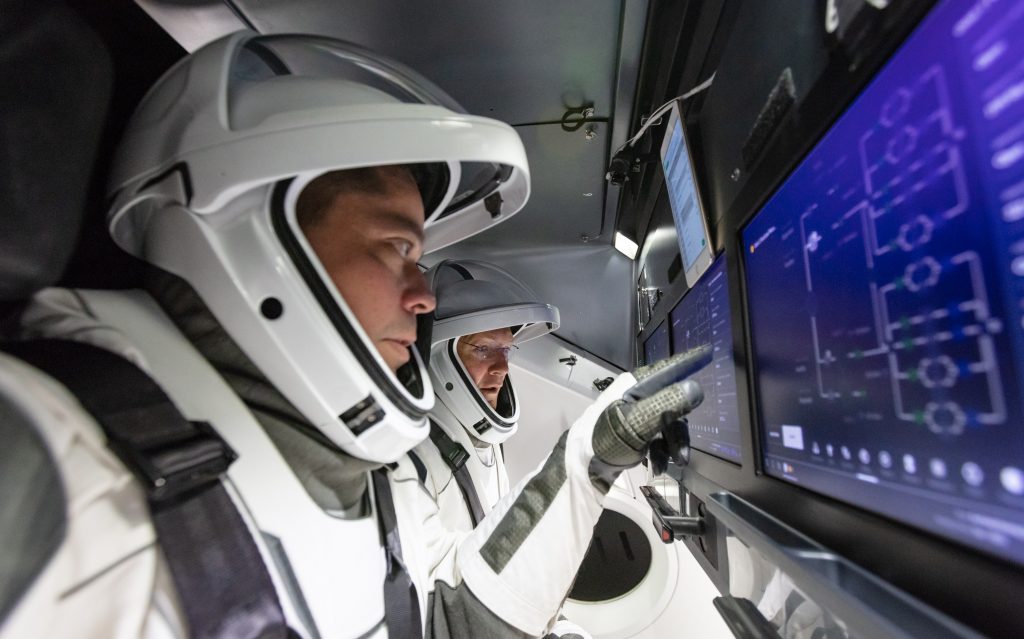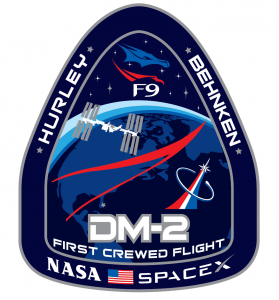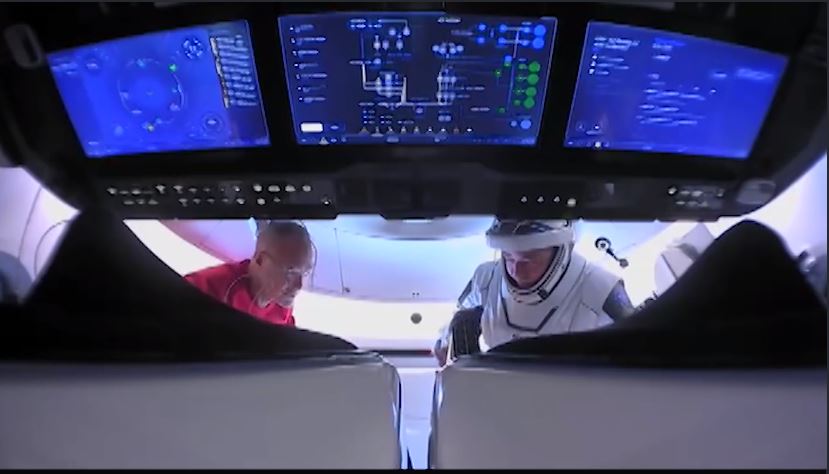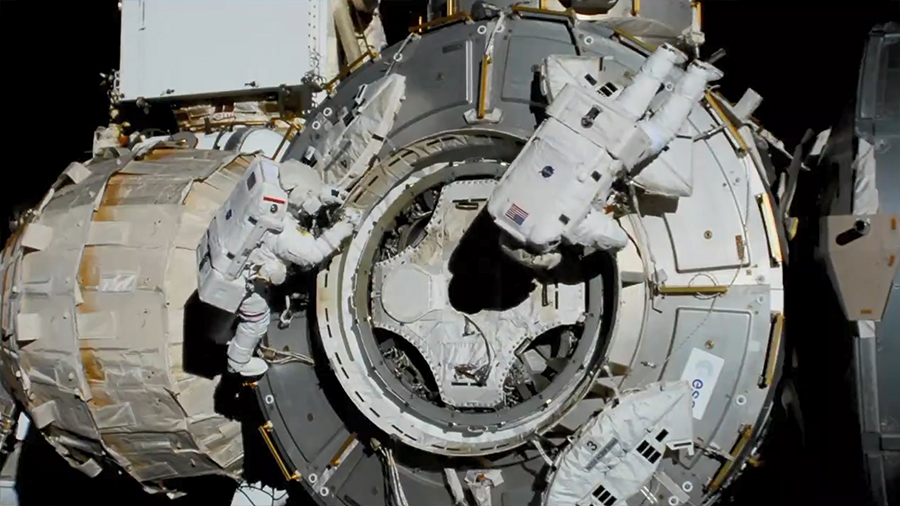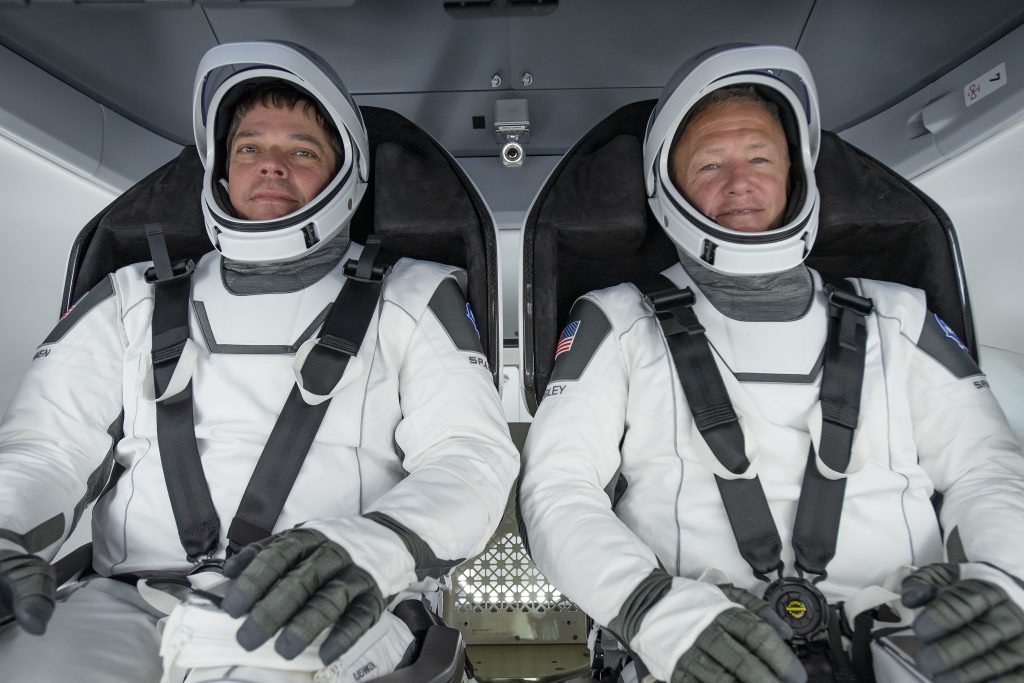
Teams from NASA and SpaceX are proceeding with preparations to bring NASA astronauts Robert Behnken and Douglas Hurley home to Earth on Sunday, Aug. 2, after receiving a weather briefing this evening from the U.S. Air Force 45th Weather Squadron.
Conditions remain “Go” at several of the needed target locations for splashdown and recovery off the Florida coast on Sunday aboard the SpaceX Crew Dragon “Endeavour” spacecraft. NASA and SpaceX will make a decision on a primary splashdown target approximately 6 hours before undocking Saturday.
Teams continue to closely monitor Hurricane Isaias and evaluate impacts to the landing sites in the Gulf of Mexico along the Florida Panhandle. Teams have several weather decision milestones ahead of and after undocking to adjust the splashdown location and time based on the forecasted conditions for recovery.
Undocking remains scheduled for approximately 7:34 p.m. EDT Saturday, Aug. 1, and splashdown at 2:42 p.m. EDT on Sunday. This will mark the first return of a commercially built and operated American spacecraft carrying astronauts from the space station, and it will wrap up NASA’s SpaceX Demo-2 mission after more than two months at the International Space Station.
NASA’s SpaceX Demo-2 return coverage is as follows (all times Eastern):
Saturday, Aug. 1
- 9:10 a.m. – SpaceX Dragon Demo-2 Farewell Ceremony aboard the International Space Station (ceremony begins about 9:15 a.m.)
- 5:15 p.m. – NASA TV undocking coverage begins for the 7:34 p.m. undocking (NASA Television will have continuous coverage from undocking to splashdown)
Sunday, Aug. 2
- 2:42 p.m. – Splashdown
- 5 p.m. – Administrator post-splashdown news conference from the Johnson Space Center, with the following participants:
- NASA Administrator Jim Bridenstine
- Steve Stich, manager, NASA’s Commercial Crew Program
- International Space Station representative
- Gwynne Shotwell, president and chief operating officer, SpaceX
- NASA Astronaut Office representative
Tuesday, Aug. 4
- 4:30 p.m. – Demo-2 crew news conference at Johnson, with the following participants:
- NASA astronaut Bob Behnken
- NASA astronaut Doug Hurley
The Crew Dragon spacecraft carrying Hurley and Behnken lifted off from NASA’s Kennedy Space Center in Florida on May 30 and arrived at the space station the following day. The Demo-2 test flight is helping NASA certify SpaceX’s crew transportation system for regular flights carrying astronauts to and from the orbiting laboratory. SpaceX is readying the hardware for the first rotational mission, which would occur following NASA certification.
More details about the return can be found in the Top 10 Things to Know for NASA’s SpaceX Demo-2 Return and the splashdown weather criteria fact sheet.


